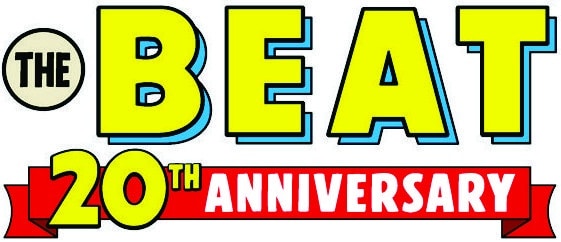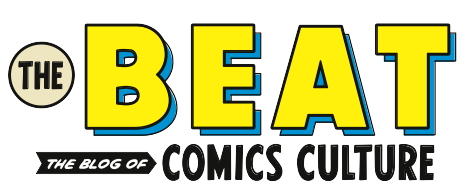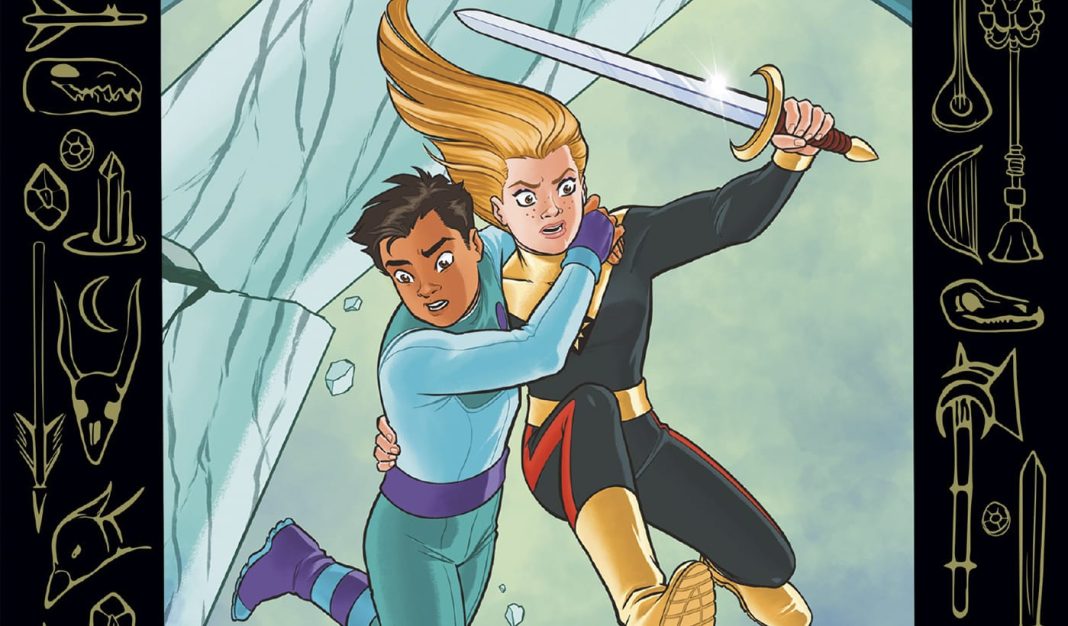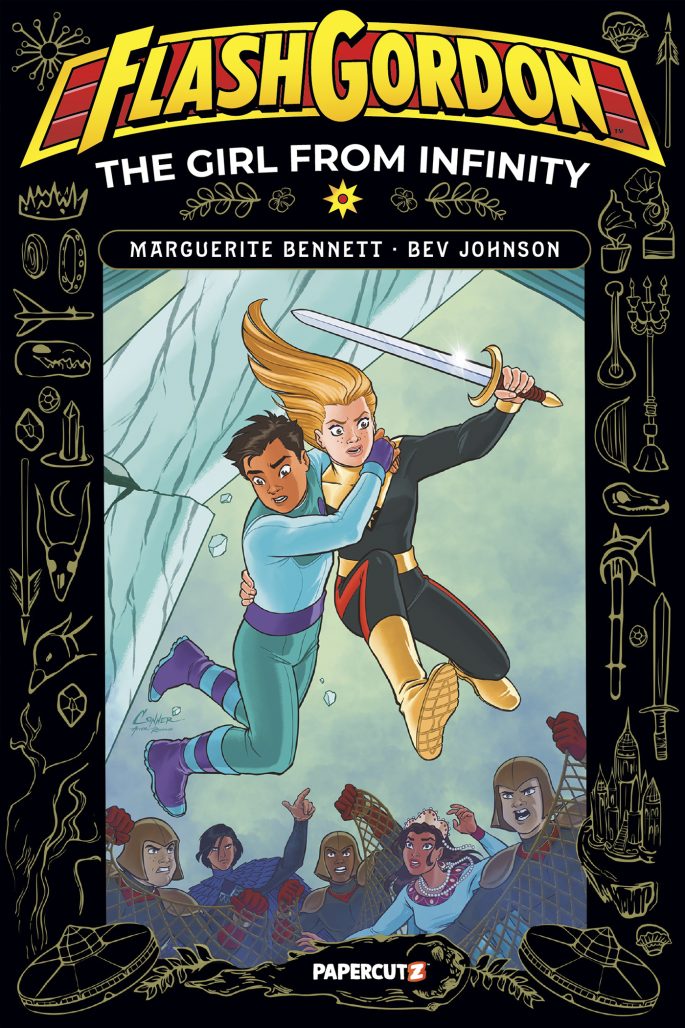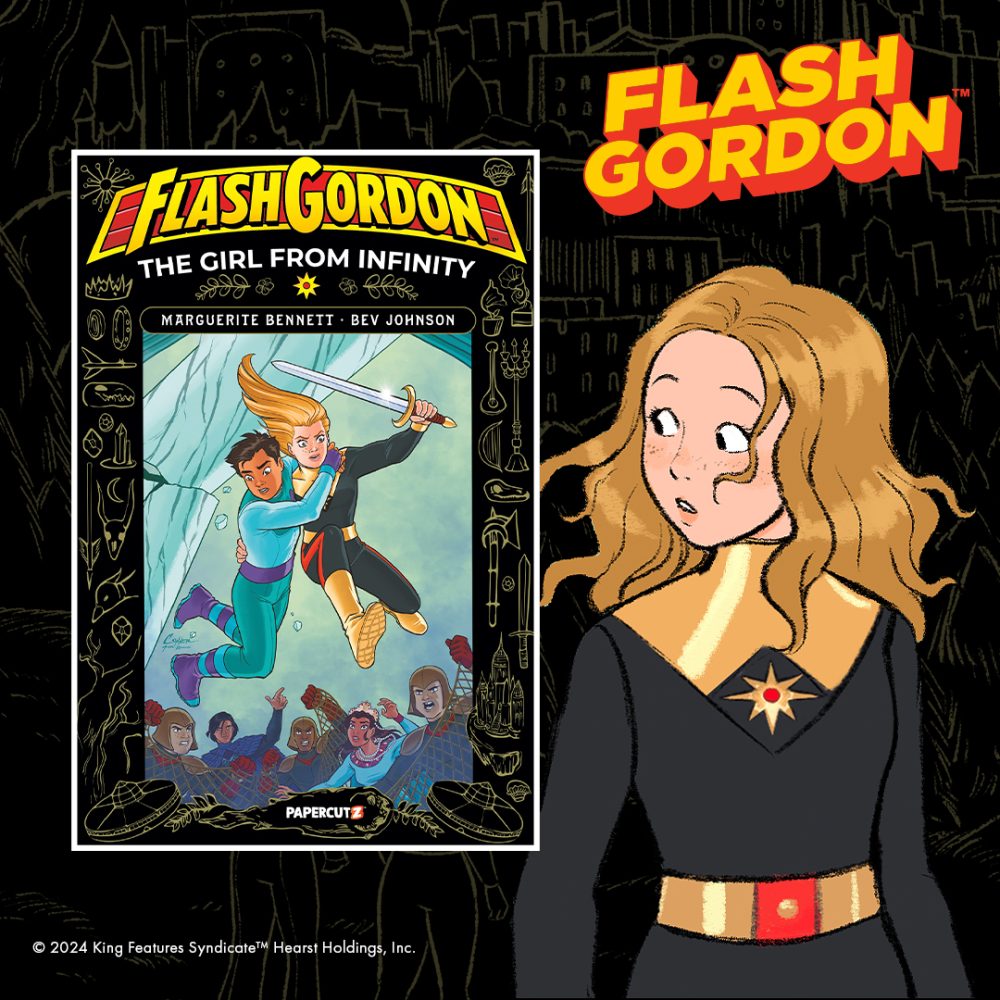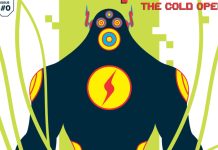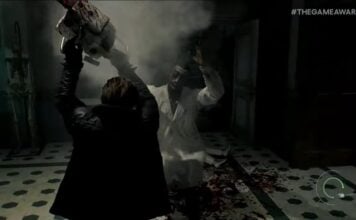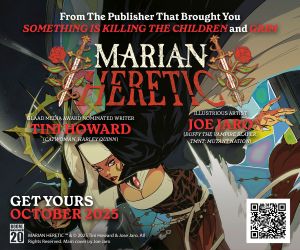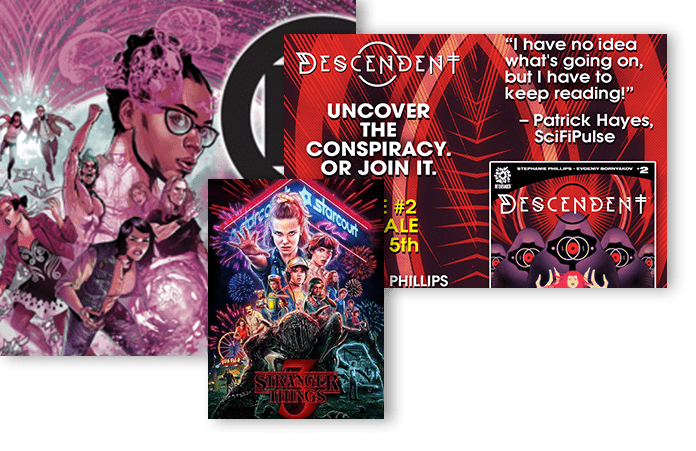Savior of the Universe! Get ready for FLASH GORDON: THE GIRL FROM INFINITY VOL. 1, a heartfelt and bold new take on the science fiction classic. Written by NYT-bestselling writer Marguerite Bennett (DC’s Bombshells, Josie and the Pussycats) and illustrated by Bev Johnson (Adventures in Fosterland, Max Einstein), this redefinition of Flash Gordon’s origins presents us with an intelligent new tale to save the world filled with heart, humanity, and high-stakes adventure.
In this version, voyager Dale Adren discovers a mysterious shooting star containing none other than the brand new Flash Gordon. With no memory about who she is, Flash and Dale must go on an adventure of epic proportions to uncover her hidden past, save Dale’s family, and rescue the alien planet of Omnia from the clutches of the cruel Emperor Azimuth!
We spoke with Bennett and Johnson about their latest book, published by Papercutz, and what it was like reimagining a classic through a YA sci-fi lens with a new Flash Gordon girl.
This interview was edited for clarity.
CHRISTIAN ANGELES: Flash Gordon is such a beloved tale that’s been around for quite some time. In your own words, what’s been your relationship with the franchise?
MARGUERITE BENNETT: I was raised with a lot of sci-fi–watching Star Trek with my dad or him reading us Heinlein novels–and so I was introduced to Flash in a very circumspect way. Every bit of science fiction seemed to contain a spore of Flash–the Emperor in Star Wars, the statecraft political marriages of Dune. Once I read Flash properly, it was like realizing I’d been on a thirty-year fetch quest to gather the puzzle pieces…and finally beheld the magnificent mosaic they revealed.
BEV JOHNSON: Personally, I also wanted to embody that same sense of adventure and daring with our Flash, but for a different audience.
ANGELES: Totally. More than ever, I think it’s important to feature more YA girl heroes, but for you both, what’s it like reimaging Flash Gordon as a young girl?
BENNETT: Courage is universal–it was as easy as anything. You’re not born believing you can’t be heroic; you have to be carefully taught. So with a blank slate like Flash, emerging from her chrysalis of a space pod, so to speak–she’s never been told she can’t be the hero. It would never even cross her mind.
JOHNSON: She’s definitely a different character, but I wanted her to have the classic heroic traits of bravery and determination, because she’s a young girl dropped into an unfamiliar world, she’s also playful and naive at times.
ANGELES: Absolutely. Also I must say, Marguerite, I loved your run on DC Bombshells. It was so different in being a new look at women superheroes from a historical context. This book, however, feels like the inverse – taking a female Flash Gordon as a stranger out of time. Can you talk about your differences in approach here? Why do you have such a talent for period pieces, both through history and its distinctly distant futures?
BENNETT: Thank you very much for the kind words! To answer the last question first, I’m mighty spoiled–all my parents were history teachers in some fashion or another, so I grew up steeped in the stories of the world. We got fairy tales, we got Twilight Zone episodes, and then we got tales of the Battle of Shiloh and the Siege of Leningrad. Truth is a lot wilder than fiction.
In the inverse, it was at times bewildering to have a series set in the far distant future, severed from all the rich human culture I knew. (There were several times when the powers that be might say, “But this character is from [human culture], so shouldn’t they–?” and I would have to retort that while they might share appearances with that human culture, this character was from another planet and an utterly original society, unbeholden to Earth traditions. Everybody is aliens, hahaha.)
For creating alien cultures, I drew on the original Flash series and embroidered it with the organic evolutions of what the characters would experience as their societies grew. In a lot of fantasy, there tends to be unnatural symmetry–the gods of the five elements, or cultures focused on equally balanced idols. Real Stone Age through Iron Age civilizations tended to have “the god of the field” then “the god of this river” then “the god of that river” and then “the god of the thing that grows in this field”–much messier and more immediate, not focused on symmetry and structure. Then more refined systems of culture and religion grow up around that scaffolding. So I aimed to structure the different cultures of the Planet Omnia X in a way that was both rough-and-tumble-organic and also had centuries to grow and develop and refine–I wanted everything to feel like it had the genuine weight of centuries behind it, steeped in tradition and majesty.
I piled poor Bev with heaps and heaps of reference material, but I was never in doubt. Her art possesses so much sincerity, charm, and strength, there was never a better artist born to bring this story to life.
ANGELES: Absolutely. The pages are stunning. Bev, can I personally also say you’ve drawn some of the prettiest children’s books I’ve ever seen! That being said, what was your approach like in drawing Flash Gordon, a girl who fell from the stars who’s out of her element, and learning about humanity?
JOHNSON: Thank you so much! What’s most important (and fun) to me when drawing characters is capturing their emotions through their expressions and mannerisms. She has an ingenue quality to her as well as curiosity, bravery, and a strong sense of justice.
ANGELES: And then some. Now, Marguerite, Flash Gordon has always held an air of political drama. What can you tell audiences about what’s to come in this story?
BENNETT: Oooooh, I love me some political drama, and we have it in spades. Scheming palace princesses, royal coupes, revolutions and rebellions and black magic plots–Flash has crashed onto Omnia at a very dangerous time, and the boiler is about to blow.
There was once an eclipse during a very fraught time during a Roman invasion of Germania, and despite the calculations of multiple factions–Germanic tribes, Roman ambassadors, mutinous soldiers–who had come so close to reaching an accord, the appearance of that eclipse in the sky absolutely shattered everything. Everyone panicked.
In the same way, Flash’s arrival is taken as an omen by a variety of factions, and they are all scrabbling to have this “fallen star” for their own, while Flash fights her way back to Dale. Swordfights, monsters, gladiatorial combat, tests, quests, trials, tribulations–we’ve got it all.
ANGELES: I’m curious Bev, can you tell us what distinctions went into the design of Dale? How about Princess Aura? What’s an unknown fact about the difficulties of designing aliens and empires?
JOHNSON: Dale’s design direction was basically a friendly, thoughtful, grounded boy who’s charged with a monumental responsibility. Unlike Flash, from the beginning of the story he’s already well-aware of the gravity of their situation. Aura is more intimidating, definitely a bit older than Flash and Dale, and while human, still very much embedded in a fantastical, lavish world they don’t understand. Even with alien designs, I try to keep the human emotion there. Overall, I wanted Omnia X as an empire to feel vast, alien, and intimidating.
ANGELES: Alright, here’s a question for both of you. What are your thoughts on the ideas of Rulers, Tyrants, and Chosen Ones after this?
BENNETT: I gotta keep mum, because there are more books to come, and my feelings are VERY apparent in them, hahaha.
JOHNSON: I like that this story takes those traditional archetypes and twists them a bit. Azimuth is the Tyrant character, but he’s not one-dimensional or just plain evil. Aura’s character plays with what it even means to rule, and if one can even earn that responsibility. Flash is, of course, the Chosen One, a role which she grapples with, at times feeling woefully unprepared to fulfill.
ANGELES: Rightly so and I’m curious where it’s going next. Finally, do you both have any final thoughts about Flash Gordon you’d like to say? What about expectations and the future?
BENNETT: I wanted FLASH GORDON to be the story I wished I’d had at her age–a fierce bright adventure with all the boring parts cut out. They don’t really make adventure movies anymore–they make action movies and war epics, but it’s not the same. I wanted the swashbuckling space opera, and I hope readers fall in love the way I did.
JOHNSON: I love how the comic turned out, and I think we came together to make it a fun emotional rollercoaster! There’s definitely more to explore in that world.
FLASH GORDON: THE GIRL FROM INFINITY is published by Papercutz, the YA branch of Madvave. The book will be out on July 1st, 2025. It’s available in paperback for $12.99 and hardcover for $17.99.
